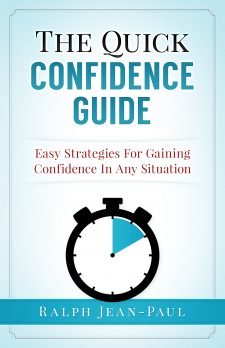One of the best learning tools that are available to us as human beings is also the same tool that we are most afraid of. It’s interesting how even the thought of failing at even the simplest task can prevent most people from even attempting that task. In the greater scope of achieving life goals, the fear of failure is an enormous hurdle for most people to jump. The truth is failure cannot be avoided forever. Those who attempt to flee from it their entire lives almost certainly miss great opportunities and even greater rewards.
I am a firm believer that your success may be depended upon how well and how quickly you can bounce back from failure. People bounce back from failure all the time but the difference between those who recover and manage, and those who recover and succeed, lies in the individual’s ability to recover quickly. The pain and disappointment of coming up short may send you into an emotional spiral filled with questions, doubts, and promises to yourself to never try again, but those normal reactions to failure usually subside. And when they do, your reaction to that failure will determine if you succeed.
For instance, if you just got let go from a good paying job, it may be time to question whether or not this is the career path you would like to continue down and if going back to school would be a good idea. Whether you are looking for organizational leadership degree courses or would like to start your MBA degree, you can find more help online about whether or not this is a good fit for you. Virtually, these degrees could be used anywhere you go.
Two Types of Failures
There are two major ways to fail. One way is to make a mistake or judgment call that turns out to be wrong. This happens in sports constantly. The coach of a team may call the wrong play that cost his team the game. It is also prevalent in business. The CEO of a company may decide to launch a new product that he thinks will bring dramatic growth for the company, but instead the product may flop on the market and the company rushes to recover from the loss. You are making hundreds of decisions a day so inevitably some of those decisions are going to be wrong. This type of failure revolves around what you did wrong. That is hard for some people to take while others would rather have that burden on their shoulders so that they can improve for the next time.
The other type of failure is when you do everything right, put all of your efforts and energies into your pursuit of success, and even do everything to prevent something from going wrong, but in the end, you still come up short. These kinds of letdowns are particularly hard to handle because of the feelings of helplessness associated with them. However, some people take this type of failure as a cue that they are close to reaping their reward. They view it as a matter of time not a matter of their ability to perform what is needed to achieve what they want.
Although these failures are hard to take, they are not impossible to overcome. Everyone experiences these defeats and everyone handles them differently.
Bouncing Back
Change ‘Failure’ to ‘Setback’
The first way to prepare to bounce back from a failure is to change your perception of that failure. I suggest that you change the word failure to setback. Once you begin to look at your shortcoming as an event that knocked you back instead of one that knocked you down, you’ll begin to see that it is very possible to recover from the letdown. This also helps you acknowledge that bumps in the road are common but they are also manageable.
Avoid generalizing
When we get frustrated we tend to generalize our situations and make broad statements that are not necessarily true. Saying “this always happens….” or “ I never….” are detrimental to your recovery process because what you are really doing is setting yourself up for another loss. Understanding that the setback that took place is a solitary event helps you recover quicker. Instead of generalizing your statements prepare yourself for the future by making saying what you want to happen.
Assess the damage
Along with your change of perception should come a clarity of the situation. Assessing the damage is looking at what you have lost in the setback and determining how far you have been setback. To most people the feeling of failure usually makes the situation appear worse than it really is. Begin to take a good look at what has been lost and what has remained.
Collecting and Resetting
Once you’ve gotten a good idea of what has been lost it is time to start picking up the pieces. Collecting and resetting is difficult if you have not yet prepared yourself to move forward. The resetting is not necessarily taking a step back but it is more like readjusting yourself so that you are in a better position to succeed.
Lot of livin’ to do
An overwhelming majority of life’s failures are not life threatening. This means that life goes on even though you came up short. We sometimes overanalyze our setbacks to the point of making them larger than life. What you have to remember is that there is still a lot of livin’ to do and each second wishing and wondering about things happening differently, is a second wasted. A perspective that the setback that you’ve experienced is temporary helps aide the emotions that are associated with failure. Try to remember that even though you’ve experienced a setback, there are still many more opportunities ahead even if you do not see them right away.
Getting up and getting back out there is the only real way to live. Some of the most successful people in the world credit their success to a failure they’ve experienced. Bounce back from your failure and you might become one of them.

 Subscribe for free today and get a FREE copy of my ebook The Path 2 Success. Begin your path today!
Subscribe for free today and get a FREE copy of my ebook The Path 2 Success. Begin your path today!










